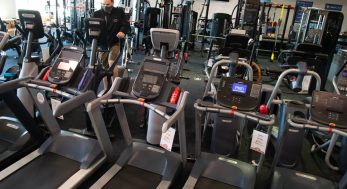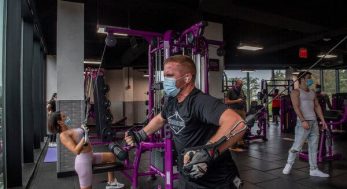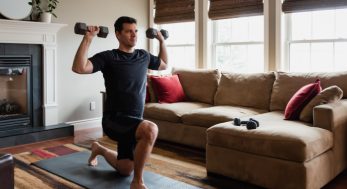How to prepare for a COVID-19 winter
How to prepare for a COVID-19 winter

COVID-19 isn’t going away. The United States surpassed 8.3 million cases as of Oct. 21 and the country is averaging more than 40,000 new cases daily. Ten states recently saw record increases in new infections, and more than half are experiencing growing rates. Only three are seeing downturns. Beyond new infections, as of Oct. 12 there were two documented cases of reinfection in the United States, on top of more than 20 global cases of reinfection. Those in the U.S. were more severe than the original infections.
Spikes in communicable diseases occur in winter due to people interacting in closer quarters, and Dr. Anthony Fauci, director of the National Institute of Allergy and Infectious Diseases, recently warned us to prepare for a worsening of the pandemic in coming months with no real respite until late 2021. Even though a vaccine could be rolled out to frontline workers and those with high-risk conditions by the end of 2020, others should expect to wait until well into next year. Beyond the wait, the fast-tracking of vaccine development contributes to the chance that the initial offering may not be fully effective.
Furthermore, studies show the virus can survive on surfaces far longer than originally thought; so beyond mask-wearing, we aren’t done with hand-washing and other ways to optimize hygiene. Educating yourself and continuing to adapt everyday habits will be crucial as we move into a season that’s challenging for some even in the best of times.
Stacker compiled 30 ways to prepare for a COVID-19 winter, using data and reports from trusted media and health officials. Options range from the expected—masking up—to more-innovative—avoiding a sense of isolation via online language meetups, or creating a Zoom-friendly work-from-home space.
Read on to learn ways to survive and thrive throughout an unusual upcoming winter in terms of optimizing health, home, work, mental health, and social interactions.
You may also like: Best states for health care
Afanasiev Andrii // Shutterstock
Get tested now

Testing is becoming more and more readily available, often for free. Those who have any of the common symptoms shouldn’t wait.
Ben Hasty/MediaNews Group/Reading Eagle // Getty Images
Assume you have the virus

Even those who were tested recently might have subsequently been in contact with someone who was asymptomatic but still shedding the virus.
Mark Nazh // Shutterstock
Stock up on masks

Masks are ever-present these days: Even restaurants and mini marts are stocking them, to encourage customers to mask up. But not all masks are equal when it comes to preventing COVID-19, so pay attention to current research.
iHumnoi // Shutterstock
Get a flu shot

Because the flu and COVID-19 share some symptoms, getting a flu shot is an important part of surviving the winter without unnecessary aches, pains, fevers, and sniffles, and being confident that any that do arise are not from garden-variety influenza. NPR has some recommendations on when and where to get one to simplify the process and maximize the impact.
Steve Heap // Shutterstock
Educate yourself about the pandemic

Insights from scientific sources change almost daily, but there are ways to stay on top of the latest data. The COVID Data Tracker has breakdowns by state, county, demographics, and more, and your county health department site typically offers information specific to your region.
You may also like: Worst states for health care
Gargantiopa // Shutterstock
Stock up on ways to survive colds and flus

The last thing anyone wants in a COVID-19 winter is another bug. Look for traditional and holistic ways to manage colds and flus: Some of them will also keep you healthier in the worst-case scenario where you contract COVID-19, too.
Karl-Josef Hildenbrand/picture alliance // Getty Images
Simplify your meals

Life during a pandemic is tough enough: Fussing over how to eat healthy can compound the stress. Simplify eating well by subscribing to one of many meal box services, or collect a handful of simple recipes.
VeronikaSmirnaya // Shutterstock
Get moving to stay healthy

Movement is one way to optimize health, and if done outside at a distance, one of the safest and most-affordable ways to keep healthy when we’re still facing COVID-19. Invest in a few layers to protect from cold and wet weather, and pay attention to these tips from the National Weather Service to avoid hypothermia.
Pixabay
Exercise online…affordably

Getting swole—or just more energetic and strong—doesn’t require daily trips to the gym. Check out affordable or even free online programs that require no or little gear: Some even have online communities to help boost your motivation and build your tribe.
Jacob Lund // Shutterstock
Move your feet

Getting in any steps is an improvement over staying stuck at the keyboard or slumped on the couch. When days get shorter, it’s important to gear up for safety when walking outdoors, with a headlamp, reflective clothing, and other ways to stay visible.
You may also like: Health risk factors that lead to the most deaths
Wirestock Images // Shutterstock
Keep on pedaling

Anyone who got obsessed with cycling this year has two options in the winter: Invest in cold-weather gear, or buy an indoor trainer so you can stay warm and dry.
GROGL // Shutterstock
Play in the snow

Mountain resorts all over the world have adopted new ways of doing business. Check out your favorite resort’s website to learn what they’re doing to keep snowboarders and skiers safe.
Microgen // Shutterstock
Boost your mental health

Depression spikes in the winter, and a sense of isolation can lead people to engage in risky behavior. Avoid both by planning ahead with ways to boost your mental health.
Iryna Kalamurza // Shutterstock
Shop for things that bring you joy

Yes, retail therapy is a thing. But don’t just consume indiscriminately. Think of the best way to be happy at minimal cost, whether it’s a comfort meal or 60 minutes of movement and escape at the yoga studio.
Yuriy Golub // Shutterstock
Don’t be S.A.D.

Sad is not just an emotion, but a scientifically recognized syndrome that affects some people when sunlight is in short supply. Sun lamps and vitamin D are two low-cost ways to beat seasonal affective disorder.
You may also like: States where obesity is increasing the most
MintImages // Shutterstock
Say no to isolation

Feeling lonely is increasingly commonplace in 2020, especially for those who live alone. Fortunately, there are ways to connect online, from Slack groups to language meetups.
Vadym Pastukh // Shutterstock
Say yes to counseling

Even the best-adjusted are struggling already, and from what the experts say, we have many more months ahead. Online counseling and support groups can both help, and sometimes they’re free.
insta_photos // Shutterstock
Optimize your work-from-home space

Anyone who’s new to working remotely because of the pandemic is more than aware of the need to adapt. Fortunately, there are tips for everything from decorating your space to using white noise to drown out distractions.
Creative Lab // Shutterstock
Zoom better

Thriving in an environment where meetings have gone almost entirely online requires learning new etiquette and new tools: One online professional offered some suggestions.
fizkes // Shutterstock
Explore safe, socially distanced commuting

Anyone who’s used to using mass transit but isn’t comfortable with crowded buses and trains will have to find new commuting options during the pandemic. Winter boots and/or traction cleats are one possibility for walkable but wintry commutes.
You may also like: Most and least healthy states in America
JEWEL SAMAD/AFP // Getty Images
Don’t get caught in the cold

Make sure your heating systems have been serviced and are in good working order ahead of cold snaps. Rebates and other incentives are available to help prepare energy systems for winter.
Tiko Aramyan // Shutterstock
Create an emergency kit

Having supplies accessible in an emergency kit is always important. The CDC has some suggestions for pandemic-specific additions.
photka // Shutterstock
Get set for outside socializing

Winter doesn’t need to be a barrier to safe socializing. With cozy additions like a fire pit or patio heater, plus lighting and perhaps a cover for those soggy days, entertaining outside throughout the chilly season is a real option.
N K // Shutterstock
Garden year-round

With a winter greenhouse, continuing a pandemic-inspired obsession with gardening is possible. It’s also one way to create community, as long as you have a few social-distancing guidelines in place.
Peter Turner Photography // Shutterstock
Gear up for snowy days

Get a snow shovel, blower, and/or rock salt to clear sidewalks: That way, you and others can safely navigate the neighborhood while meeting at a distance.
You may also like: Sugar content of 50 popular breakfast cereals
IVL // Shutterstock
Shop safely outside

By patronizing outdoor markets, not only do you stay safer, but also support farmers, artisans, and other small businesses that have been hit hard by the pandemic.
Pixabay
Stay safe when voting

Voters have more options in many states this year because of COVID-19, but that also contributes to confusion. Fortunately, there are resources with state-by-state breakdowns on how and where to vote safely.
Brian A Jackson // Shutterstock
Travel the world remotely

Exploring the world without leaving your computer is an option these days. Venues ranging from museums to zoos are inviting patrons into their spaces this way.
Pixabay
Be smart when you socialize

New research from the CDC talks about ways that COVID-19 spreads indoors. One doctor reminds us that we might not want to remove our masks quite so quickly.
Kzenon // Shutterstock
Build your bubble

Create a “coronavirus bubble” of friends to better stay under the currently recommended number of people outside your household. But beware: Everyone needs to commit to interacting only with that group, or the game plan won’t work.
You may also like: Countries with the best life expectancy
Mladen Zivkovic // Shutterstock


